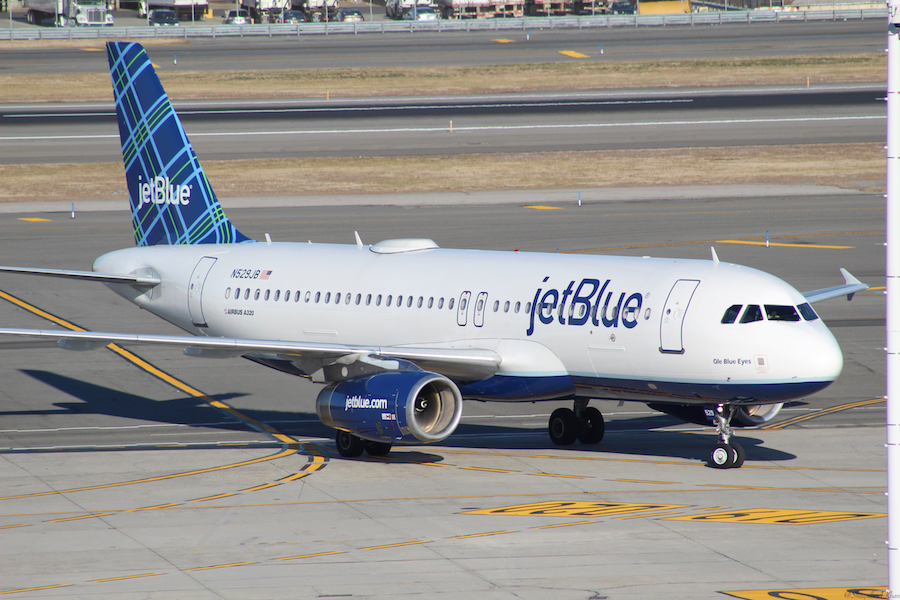In this week’s article we examine the decision of U.S. District Court Judge Vince Chhabria in Cotter v. Lyft, Inc., Case No. 13-CV-04065-VC (N.D. Cal. April 7, 2016) denying a motion for preliminary approval of a proposed class action settlement. The Court’s analysis is instructive and should provide guidance in how to negotiate and present a reasonable settlement proposal in a travel law class action. For additional discussions of travel law class action settlements see Travel Law: The Southwest Airlines replacement drink coupon settlement, www.eturbonews.com (10/15/2015). See also: Dickerson, Travel Law, Chapter 6, Law Journal Press (2016); Dickerson, Class Actions: The Law of 50 States, Chapters 9 & 10, Law Journal Press (2016).
Travel Law Update
Terror Targets Update
Cape Verde Islands
In Steinmetz, Terror in Cape Verde Islands: Airport closed, 10 dead, www.eturbonews.com (4/26/2016) it was noted that “Media reports in the Cape Verde islands off West Africa say Cape Verde’s main airport and country’s airspace have been closed after 8 soldiers and 3 civilians were found dead at army barracks on Tuesday. The website of local newspaper A Semana says two of the dead civilians are from Spain”.
Zika, Zika, Zika
In Herszenhorn, Senate Nears Deal for at Least #1.1 Billion to Fight Zika Virus, nytimes.com (4/26/2016) it was noted that “Senate negotiators on Tuesday moved closer to an agreement to; provide at least $1.1 billion in emergency financing to combat the rapidly spreading Zika virus, which public health official warn; poses an imminent threat in the United States”.
Dangerous Dogs Banned In Dubai
In More dangerous dog breeds to be banned in UAE, gulfnews.com (4/25/2016) it was noted that “Come October, there will be six more dog breeds banned from entering the country. When the new rule kicks in, the list of banned dog breeds that authorities deem as dangerous will expand from the current seven to 13…the ministry did not reveal the new breeds of dogs that will be banned…there are currently seven types of dog breeds prohibited for import. All kinds of pit bulls; Japanese Tosa (Tosa Inu, Tosa Fighting Dog); Argentinian Fighting Dog (Dogo Argentino, Argentinian Mastiff); Brazilian Fighting Dog (Fila Brazilian Mastif); Wolf dog hybrids (any dog mixed with a wolf); American Staffordshire terrier; Cross breeds with extract of the above listed breeds”. Woof.
Burning Ivory In Kenya
In Kenya’s ivory burn puts pressure on other countries, www.eturbonews.com (4/27/2016) it was noted that “on Saturday, April 30, some 105 tons of ivory will be destroyed in a setting at Nairobi National Park. This was inspired by relentless campaigners like Dr. Pauls Kahumbu, whose ‘Hands off our Elephants’ had raised global attention to the plight of the African elephant. Kenya’s unprecedented step sets the country apart from many other elephant range countries where the governments are still hanging on to the notion that their stocks may eventually be sold…in neighboring Tanzania, wiped out tens of thousands of elephant(s) over the last several years”.
Airbnb Soaring
In Steinmetz, Airbnb: Revenues Soar to $6 Billion Globally, www.eturbonews.com (4/26/2016) it was noted that Juniper Research’s “latest research, Sharing Economy: Opportunities, Impacts and Disruptors 2016-2010, found that shared space platforms, such as Airbnb are allowing users to rent rooms in residential properties at rates often undercutting traditional hotel rooms, disrupting the leisure and tourism industry significantly. With these providers taking a proportion of reservation and booking fees, revenues are set to grow from an estimated $2.3 billion in 2015, to $6.1 billion globally by 2019″.
Airbnb In The Hudson Valley
In Croke & Matsuda, Airbnb guests flock to region, The Journal News (4/25/2016) “The sharing economy is flourishing in the Lower Hudson Valley, at least when it comes to Airbnb, a home-sharing site. Nearly 100,000 visitors came to the mid-Hudson region (New York State) through Airbnb last year, according to a recently released report by Airbnb outlining its economic impact on the area. While not as high as the numbers generated by traditional hotel guests, Airbnb reported 8,000 inbound Westchester guests in 2015, who spent, on average, 7.7 nights at an Airbnb hosted spot, generating $2 million for those local hosts”.
How The Rich Cruise
In Schwartz, In an Age of Privilege, Not Everyone In is the Same Boat, nytimes.com (4/23/2016) it was noted that “Companies are becoming adept at identifying wealthy customers and marketing to them, creating a money-based caste system… Behind a locked door aboard Norwegian Cruise Line’s newest ship is a world most of the vessel’s 4,200 passengers will never see. And that is exactly the point. In the Haven, as this ship within a ship is called, about 275 elite guests enjoy not only a concierge and 24-hour butler service, but also a private pool, sun deck and restaurant, creating an oasis free from the crowds elsewhere on the Norwegian Escape. If Haven passengers venture out of their aerie to see a show, a flash of their gold key card gets them the best seats in the house. When the ship returns to port, they disembark before everyone else. “It was always the intention to make the Haven somewhat obscure so it wasn’t in the face of the masses’, said Kevin Sheehan, Norwegian’s former chief executive, who helped design the Escape with the hope of attracting a richer clientele. ‘That segment of the population wants to be surrounded by people with similar characteristics”. Indeed.
Biker’s Guide To Cycling In New York City
In Wright-Piersanti, A Nervous Biker’s Guide to Cycling in New York City, nyti.ms/1T8zzAI (4/24/2016) it was noted that “Maybe you are visiting New York City, and that rack of Citi Bikes looks fun yet daunting. Or perhaps there is a bicycle leaning against a wall in your apartment, waiting, but the idea of joining those fixed-gear daredevils on city streets makes your stomach drop. And besides, the honking vehicles, jaywalking pedestrians and idling trucks are enough to drive anyone to call a cab…Whatever your trepidation, you can get comfortable on two wheels in this city. We talked to some experienced urban bikers to get advice on how you, the nervous cyclist, can hit the streets”.
Ditching The Car In Los Angeles
In Peterson, In Los Angeles, Ditching the Car for an Eco-Friendly Trip, nytimes.com (4/19/2016) it was noted that “Los Angeles may feature an abundance of holistic arts, yoga and macrobiotic diets, but it’s probably not the first city that comes to mind when you hear the term ‘eco-friendly’. You can largely thank the 900 miles of freeways and highways in Los Angeles County for that…It’s possible, though to escape the routines of the typical visitor in the name of environmental friendliness. I set out to marry the city’s organic cuisine and healthy, active lifestyle with something that it isn’t widely associated with-leaving a small carbon footprint-by ditching the car and creature comforts of regular hotels. I discovered that it’s possible to rely on the Metro…which includes buses, a light rail system and, yes, even a subway. I was able to find a comfortable yurt-that’s right, the traditional Central Asian round tent-in a quiet, wooded part of the city accessible by light rail and just minutes from downtown. And all while saving some money in the process”.
Traveling Green
In Rosenbloom, 10 Ways to Be a Greener Traveler. Even if You Love to Fly, nytimes.com (4/19/2016) it was noted that “You want to be green…But you’re not going to forgo a flight to a tropical paradise and top-notch accommodations, even though planes emit greenhouse gases and routine hotel practices, like washing the linens each day, hurt the environment. After all, you love to travel-and well. There’s still hope. To help you sleep easier on those high-thread-count sheets, here are 10 small ways to travel a little more responsibly, even when taking that trip to Hawaii”.
Game of Drones
In Flame, Games of Drones: These flying machines have been grounded in New York, but that’s about to change, Crain’s New York Business (4/24/2016) it was noted that “The Association for Unmanned Vehicle Systems International, in a 2013 report, forecast the economic impact of commercial activity in the U.S. at $13.6 billion within the first three years of the FAA setting its new rules. The trade group estimated New York state’s cut at more than $400 million. As new regulations hover in limbo. Some New York drone startups have become outlaw operations, ignoring existing regulations that they see as outdated. And some, like Aerobe, the city’s biggest commercial drone operator, are growing by working anywhere but here”.
Travel Law Article: The Cotter Class Action
In the Cotter case the Court noted that “The plaintiff in this case-three people who have worked as Lyft drivers-move for preliminary approval of a class settlement agreement they reached with Lyft. Five other drivers, along with the Teamsters-a labor union that is seeking to organize Lyft drivers-have filed objections to the agreement and urge the Court to deny the motion for preliminary approval”.
Background
“Patrick Cotter and Alejandra Maciel used to drive for Lyft in California. They filed this suit contending that Lyft violates California law by classifying its drivers as ‘independent contractors’ rather than ‘employees’. This distinction matters a great deal, because under California law, employees get a number of benefits and protections that independent contractors don’t. For example, California law guarantees employees a minimum wage, extra [pay for working overtime, and workers’ compensation benefits. The original theory behind this distinction…was that independent contractors don’t need those kinds of across-the-board safeguards, because their special skills give them bargaining power and the ability to negotiate their own set of contractual benefits and protections. Employees, on the other hand, need a minimum floor of legal safeguards to prevent employers from taking undue advantage of their inferior bargaining position”.
Recovering Driver Expenses
“As applied to a case involving drivers, perhaps the most significant legal protection enjoyed by ‘employees’ but not ‘independent contractors’ is the right to be reimbursed for expenses incurred in performing the work. The law prevents companies from passing on to employees the cost of doing business. Lyft drivers (spend lots) of money on gas, and their vehicles undergo significant wear and tear. If the drivers are employees, the law would require Lyft to reimburse them for these expenses. If the drivers are independent contractors, they would be left to negotiate their own terms with Lyft regarding reimbursement (if, that is, they have any negotiating power to speak of)”.
The Class Action
“Cotter and Maciel brought their suit as a proposed class action…On behalf of (a) proposed class of California Lyft drivers (seeking) injunctive relief-namely, a court order requiring Lyft to classify its drivers as employees, and to provide the drivers with all the benefits and protections that California law confers upon employees. Cotter and Maciel also sought various forms of monetary relief for the drivers-primarily reimbursement of expenses the drivers had incurred while working for Lyft, but also damages and penalties for things like failure to pay minimum wage, failure to pay overtimes, failure to provide paid meal and rest breaks, and failure to pass on tips received from riders.
Ruling On Driver Status
“The parties thus filed cross-motions for summary judgment on the question whether Cotter and Maciel were employees or independent contractors as a matter of law. The Court denied both motions and ruled that, because there is no clear legal answer to this question, it would be for a jury to decide whether Cotter and Maciel were employees or independent contractors (Cotter v. Lyft, Inc., 60 F. Supp. 3d 1067 (N.D. Cal. 2015)). The Court explained that although Cotter and Maciel were like independent contractors in some ways (for example, they could control their own schedules), they were employees in other ways (for example, Lyft retained the right to control how Cotter and Maciel performed their jobs when they did choose to work, and Lyft retained the right to terminate them for any reason). In this ruling, the Court flagged a key issue likely to affect a jury’s decision about how to classify a driver-whether he drove regularly and full time, or sporadically and part time. A person who drives regularly and full time, the Court noted, is likely relying on Lyft as his primary source of income, and therefore looks more like the type of person California’s wage and hour laws were designed to protect. A person who drives sporadically for Lyft, as one of many odd jobs for different clients, arguably looks more like an independent contractor”.
The Proposed Settlement
“Following this ruling, the parties decided to participate in a series of settlement conferences with a magistrate judge of this court”.
Change In Relationship
“The (settlement) agreement has a prospective component that would somewhat alter the relationship between Lyft and its drivers. Currently, Lyft preserves the right to terminate its drivers (that is, deactivate them from the Lyft platform) for any reason and at any time. Under the proposed settlement, there would be a laundry list of restrictions and requirements imposed on drivers by contract, and Lyft would have the right to terminate drivers only for beaching the contract. In certain circumstances, a driver would be entitled to receive notice from Lyft of the termination decision and given an opportunity to respond. If Lyft is unsatisfied by the response and maintains its decision to terminate the driver, the driver could take the breach-of-contract dispute to arbitration, with Lyft paying all arbitration-specific fees”.
Monetary Component
The proposed settlement agreement also provided for “a monetary component…that would compensate drivers in connection with work they’ve already performed. Specifically, Lyft agrees to pay $12.25 million to a settlement fund, and drivers may collect from that fund based on the estimated number of miles that have driven in the past. As (plaintiffs’ counsel explained) this 12.25 million settlement figure was derived almost elusively from their estimate of the maximum amount for which Lyft would be liable to the drivers for the plaintiffs’ reimbursement claim. The maximum value plaintiff’s counsel assigned to the reimbursement claim when they reached the agreement was $64 million”.
Two Groups Of Drivers
“The agreement also establishes two groups of drivers for settlement purposes: full-time drivers and part-time drivers. Full-time drivers are those who worked more than 30 hours per week at least half the time they worked for Lyft. Part-time drivers are those who worked less than this amount. Full-time drivers receive a higher per-mile settlement payment than part-time drivers, on the assumption that the full-time drivers have a stronger claim for employment status. The premium to be received by the full-times drivers is fifty percent”.
The General Release
“In exchange for this prospective and monetary relief, the class members agree to waive any legal claims they may currently have against Lyft pertaining to their wages or their employment status. The waiver applies to claims that may have arisen during the ‘class period’ which begins at Lyft’s inception in 2012 and ends on the date of preliminary approval of the class settlement by the Court”.
The Court’s Analysis
Noting that pre-class certification settlements require the application of a “‘higher standard of fairness…This additional scrutiny is needed to ensure that the interests of the class are adequately protected, because the agreement has ‘not [been] negotiated by a court-designated class representative’”, the Court found, inter alia, the monetary component to be inadequate. The “agreement requires Lyft to pay $12.25 million into a settlement fund”. After deductions for attorneys’ fees (one third), administrative costs ($120,000) and PAGA penalties the class would receive $8.36 million and “Assuming all drivers claim their money, this would result in an average payout of $53.02 to part-time drivers and an average payout of $676.19 to full-time drivers”.
Short Changing The Drivers
“There is one clear problem (and it is a major one)…The problem is, using the approach devised by plaintiffs’ counsel themselves, they shortchanged the drivers at least by half-because a proper estimate of the maximum reimbursement claim is at least twice the amount plaintiffs’ counsel based the settlement on…Lyft drivers had logged roughly double the amount of miles, so that the maximum value of the reimbursement claim was actually $126 million (and not $64 million)…Instead the plaintiffs’ lawyers used outdated information, from June 2015…Counsel though they were getting their clients a settlement that was roughly 17.36% of the maximum value of the reimbursement claim. In fact, they got their clients a settlement that was at most only 8.82% percent of the reimbursement claim. This is (a) major defect in the agreement.
New Agreement Encouraged
After rejecting this proposed settlement, the Court noted that “if the parties wish to negotiate a new agreement that addresses the defects identified in this ruling” they should do so before May 2016. Stay tuned.
Justice Dickerson has been writing about travel law for 39 years including his annually updated law books, Travel Law, Law Journal Press (2016) and Litigating International Torts in U.S. Courts, Thomson Reuters WestLaw (2016), and over 400 legal articles many of which are available at nycourts.gov/courts/9jd/taxcertatd.shtml. Justice Dickerson is also the author of Class Actions: The Law of 50 States, Law Journal Press (2016). For additional travel law news and developments, especially in the member states of the EU, see IFTTA.org.
This article may not be reproduced without the permission of Thomas A. Dickerson.
WHAT TO TAKE AWAY FROM THIS ARTICLE:
- The Court's analysis is instructive and should provide guidance in how to negotiate and present a reasonable settlement proposal in a travel law class action.
- When the new rule kicks in, the list of banned dog breeds that authorities deem as dangerous will expand from the current seven to 13…the ministry did not reveal the new breeds of dogs that will be banned…there are currently seven types of dog breeds prohibited for import.
- In Schwartz, In an Age of Privilege, Not Everyone In is the Same….






















